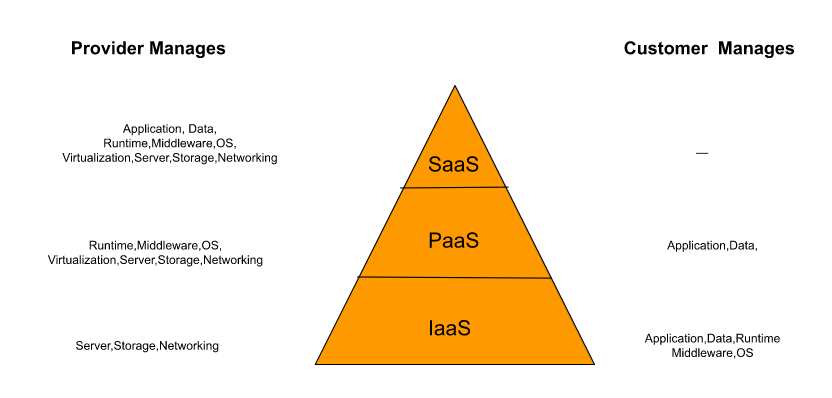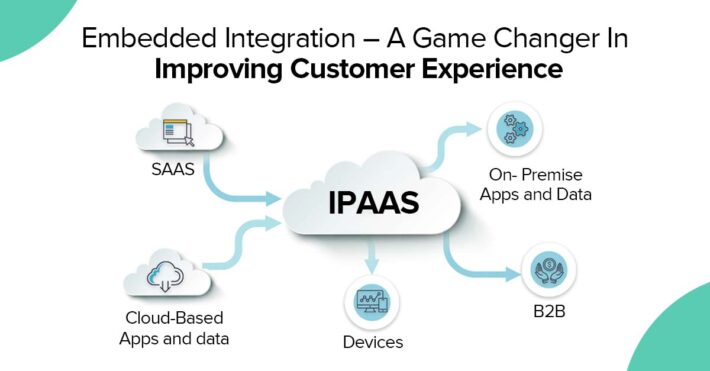SaaS vs PaaS vs IaaS Demystified
SaaS or PaaS or IaaS : What do these mean?
There is always a lot of confusion and a lot of jargon that pops up whenever we talk about the ‘As a Service model’. With cloud-based delivery models becoming mainstream, organizations are in constant flux to decide how they manage their resources and what service models to go for. The first step in this journey is to break down what SaaS, IaaS or PaaS is and on what basis an organization can opt for these business models.
Let’s take a deeper look into what SaaS, IaaS or PaaS mean and what it translates to in terms of ownership for an organization when they opt for these business models.

The Connect: “PaaS tools can be used to build SaaS products and can rely on IaaS for infrastructure .”
- SaaS (Software as a Service) – One of the most popular cloud delivery models, SaaS products offer access to cloud-based tools to end consumers or businesses for use. i.e. Think Spotify, Slack or SurveyMonkey.
- SaaS tools are easy to set up and use. They can easily scale as they need not be downloaded to individual or organization owned devices.
- Consumers can easily access SaaS-based tools with a link that is available over the internet and can pay for them based on usage or monthly/yearly subscription.
- Businesses can easily manage and upgrade SaaS-based products as this is included as part of the subscription.
- IT teams do not need to worry about software maintenance and the process of purchasing these tools is seamless.
SaaS tools are not perfect and there are drawbacks as well that you should foresee before you choose them.
- No control over the infrastructure as you can only access them via a link. If the SaaS provider experiences an outage, so would you and this could be frustrating for other businesses and consumers that rely on the service.
- There are security and privacy concerns that need to be addressed with SaaS offerings
- Any integrations or new capabilities are up to the provider and there is no way to patch them from your end.
Platform as a Service (PaaS): This cloud delivery model provides a framework to developers with ready-to-use components to build custom applications. Unlike SaaS, It does not deliver software over the internet and instead is a platform for developers or business users that they can use to create applications. PaaS users do not need to worry about storage, server management and instead focus on collaborative app development. The PaaS can be offered as a combination of subscription, license + services, or pay-as-you-go model.
Examples: Google App Engine, Heroku, or MS Azure Pipelines
PaaS tools work great for developer ecosystems and are very easy to sign up to. They offer low code/no code environments as well that can fasten the time to market. Flexibility and scalability are inbuilt into PaaS service. It might not be a great fit for organizations that want to control infrastructure along with what has been built on the platform.
Integrations Platforms as a Service (IPaaS): A different flavor of PaaS that allows organizations to automate integrating software, applications, data, and services across multiple environments be it on-premise, cloud or private cloud. A modern IPaaS can bill you based on subscription or pay-by-use or a combination of subscription and professional services. We at DBSync offer an IPaaS for customers who have specific automation needs while they work with various ecosystems i.e. Salesforce, QuickBooks and more.
Infrastructure as a service (IaaS) :
This model provides on-demand access to cloud-hosted computing infrastructure i.e. servers, storage capacity and networking resources that customers can configure similarly as they use on-premise hardware. The Cloud service provider i.e. Google Cloud, AWS or Microsoft Azure is responsible for hosting, managing and maintaining the hardware and data centers. You have the option to choose between Pay-as-you-go and subscription licenses.
Interesting fact: IaaS providers i.e. AWS were the first ones to popularize the concept of the ‘’As a service’’ model and it was born out of Amazon’s internal need where teams build robust systems and expose their services via APIs.
IaaS offers companies the greatest control over their software and hardware resources but the onus is still on the customer to worry that everything is working properly i.e. apps, data, OS and customers have to worry about hiring the right skill who can handle these resources.

When to use SaaS or PaaS or IaaS?
Some of the key questions that you should ask would help you decide which cloud delivery models you should go for
- Want to launch quickly in the market and do not have time to manage software or infrastructure.( SaaS)
- Multiple developers or collaborators work on an environment to build the application incrementally. (PaaS)
- Companies that see massive growth and volumes and may need to scale their infrastructure accordingly. ( IaaS)
These are just a few examples but many organizations need to constantly question themselves on what they want to control vs what they want to manage and how they want these services to be delivered which will help them zero in on the right service model that works for them. This should be a good starting point for anyone who is still trying to understand these concepts and check out our blogs to learn about such topics which are spoken about in variety but understood less often.
We would be delighted to discuss your use case and explore how DBSync can support your success. Please feel free to Schedule a meeting with us.
